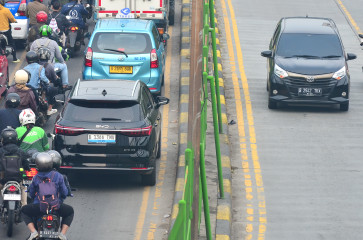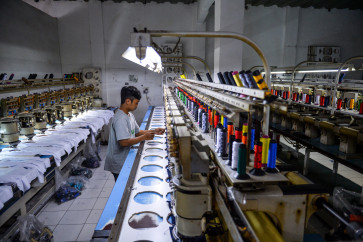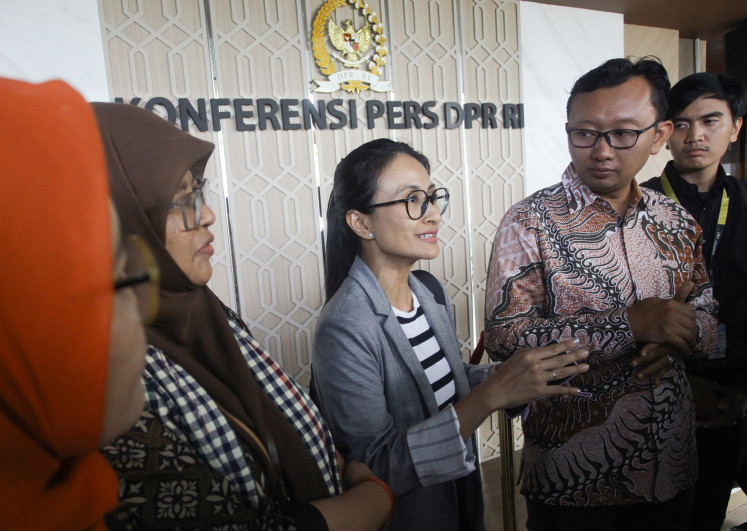Popular Reads
Top Results
Can't find what you're looking for?
View all search resultsPopular Reads
Top Results
Can't find what you're looking for?
View all search resultsDutch community keeps centuries-old Sinterklaas tradition
Santa in town: Children jostle with each other to get close to and shake hands with Sinterklaas at Caping Gunung restaurant at Taman Mini Indonesia Indah, East Jakarta, on Friday
Change text size
Gift Premium Articles
to Anyone
S
span class="caption" style="width: 398px;">Santa in town: Children jostle with each other to get close to and shake hands with Sinterklaas at Caping Gunung restaurant at Taman Mini Indonesia Indah, East Jakarta, on Friday. Sinterklaas is scheduled to visit the Dutch International School in Jakarta. JP/R. Berto Wedhatama Dutch communities in Jakarta maintained their centuries tradition of celebrating Sinterklaas, or Saint Nicholas, in a recent celebration at the Taman Mini Indonesia Indah park in East Jakarta.
At the event, hundreds of children from the Dutch International School (NIS) and their parents sang and played while waiting for Sinterklaas to come along with his assistants, the Zwarte Piets or the dark-skinned Piets, to shower them with presents.
The name day of Saint Nicholas, bishop of Myra (in modern-day Turkey) the patron saint of — among others — children, falls annually on Dec. 6, but according to Dutch popular culture, the saint comes from Spain.
“In the Dutch culture, we celebrate him on [Saint Nicholas’ eve] every Dec. 5 and he arrives two weeks in advance by boat, sort of like the Christmas Santa Claus, but from Spain,” NIS vice principal Sander Fisser said.
“In two weeks children can put one of their shoes in front of the chimney and at night one of the Zwarte Piets will leave presents when they’re asleep,” he added.
According to Dutch tradition, Sinterklaas has a big book containing the list of children who have been good throughout the year and only they receive presents from him.
Indonesian children in the 1970s were taught that good kids would get presents from Sinterklaas, while the naughty ones would be punished by Zwarte Piets.
During Sinterklaas celebrations, Dutch children also sing traditional songs asking Sinterklaas to leave presents in their shoes.
Fisser said the annual celebration also served as an excuse for Dutch families in the city to get together, and for parents to both relive their childhood memories and to pass the tradition on to their children.
“Every child in the Netherlands believes in [the existence of] Sinterklaas,” Fisser said.
He added that most children believed in Sinterklaas until they were eight.
Fisser said Dutch people in Jakarta had to make a couple of adjustments to maintain the tradition.
“In the Netherlands, it’s winter time and it’s cold. In the evening, it starts getting dark at five,” he said.
“Furthermore, because of the winter, we have chimneys.
“So here, we have to adjust, like putting the shoes in front of a door [instead of around the chimney] and some families even make some fake chimneys,” he added.
One of the parents, Margit Gerouw, said that back home, the celebrations were a bigger affair.
“Sinterklaas comes to the city and the whole city welcomes him,” she said.
Margit said that the celebration brought back many childhood memories and that even as an adult, she enjoyed it.
“I think even adults are still nervous when they see Sinterklaas,” she said.










